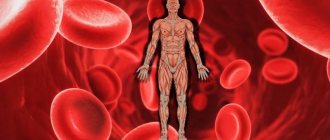Infectious diseases are a group of diseases caused by the penetration of pathogenic (disease-causing) microorganisms into the body. In order for a pathogenic microbe to cause an infectious disease , it must have virulence (toxicity; lat. virus - poison), that is, the ability to overcome the body's resistance and exhibit a toxic effect. Some pathogenic agents cause poisoning of the body with exotoxins released during their life processes (tetanus, diphtheria), while others release toxins (endotoxins) during the destruction of their bodies (cholera, typhoid fever).
One of the features of infectious diseases is the presence of an incubation period, that is, the period from the time of infection until the appearance of the first signs. The duration of this period depends on the method of infection and the type of pathogen and can last from several hours to several years (the latter is rare). The place where microorganisms enter the body is called the entry gate of infection. Each type of disease has its own entrance gate, for example, Vibrio cholera enters the body through the mouth and is not able to penetrate the skin.
Alien hand syndrome
The story about this syndrome could well form the basis of a horror film, however, for some people this strange disease is a daily reality. The phrase that the right hand does not know what the left is doing loses all figurative meaning and is taken literally when talking about people with this strange disorder.
Alien hand syndrome is a complex psychoneurological disease in which the patient’s hand, no matter how strange it may sound, behaves regardless of his intentions. From the outside, such a person may seem obsessed. His sore arm may spontaneously copy the movements of the healthy limb or demonstrate incomprehensible gestures. But this is not the greatest danger from the “anarchist hand.” In some cases, it can beat or strangle a person, including the “owner,” and at the same time it is impossible to control the actions of the limb.
Content:
- Alien hand syndrome
- Morgellons disease
- Fibrodysplasia - stone man
- Alice in Wonderland syndrome
- Exploding head syndrome
- Walking corpse syndrome
- Progeria – accelerated aging
- Foreign Accent Syndrome
- Aquagenic urticaria - allergy to water
- Congenital insensitivity to pain
- "Laughing Death"
- Werewolf syndrome
- Tree Man Syndrome
- People with blue skin
- Fishy odor syndrome
- Mobius syndrome
- Vampire Syndrome
- Eosinophilic gastroenteritis: food allergies
This disorder was first described in the early 20th century by the German neurologist Goldstein. It can be a “side effect” of head injuries or botched brain surgery that damage the corpus callosum, frontal region, or thalamus of the brain. As a result of such injuries, one hand of a person seems to be knocked out of control of the central nervous system. In addition, alien hand syndrome can occur as a complication of a stroke, Alzheimer's disease, or a brain tumor.
Black Death
The Black Death (black plague, bubonic plague) was a widespread epidemic that devastated Asia and Europe in the mid-14th century. This acute infectious disease, which in its earliest stages and in some places appears to have been predominantly of the pneumonic type (which helps to explain its rapid and frightful spread), is marked by swelling of the lymph nodes or buboes. It was also called the "Black Death" because of the black spots caused by subcutaneous hemorrhages that appeared on the skin of affected people near the time of death. Blood poisoning was rapidly fatal, with victims usually dying within two to four days. Bubonic plague was caused by the bacterium Bacillus pasteurella pestis
(
Yersinia pestis
), transmitted to humans by fleas from infected rats. Pneumonic plague, which occurs as a complication of the bubonic type and as an invasion of the lungs by bacteria, spread from person to person. In addition to black spots on the skin, the plague manifested itself in tumors in the groin or armpit and bleeding from the lungs; it was also characterized by very high fevers, delirium and prostration in its victims.
Originating in Central Asia, the disease killed an estimated 25 million Chinese, Indians and other Asians 15 years before it reached Constantinople in 1347. From there it quickly spread to Genoa, Naples, Venice, Marseille and other Mediterranean ports; ships carrying crusaders returning from the Middle East became a key factor in this regard. By the end of 1347, the plague had struck Dalmatia and the islands of Cyprus and Sicily. Thousands of people in southern France, Spain and Italy died from the black plague before it reached Paris in June 1348 and London a few months later. Raging in England and Ireland, the mysterious disease spread to the Netherlands, Germany, Norway, Sweden, Denmark and Russia, and by 1350, all of Europe (including Iceland and Greenland, according to some sources) was in the grip of the plague.
Pieter Bruegel the Elder "The Triumph of Death" (1562)
Historical estimates of mortality directly from the plague range from 1/4 to 3/4 of the populations of Europe and Asia; at least 25 million Europeans died between 1347 and 1351. They said that half of London (about 100 thousand people) died; 2/3 of Oxford University students died, 4/5 of the population of Marseille. The Pope in Avignon, where half the population had died, sanctified the Rhone River so that corpses could be thrown into it for Christian burial. More than a third of Italy's population died.
At the time, medical and lay authorities throughout Europe sought to provide rational explanations for a virulent plague that was clearly contagious. They published many treatises, trying to explain to the public the causes and symptoms of the disease and find methods of treatment.
The plague was attributed to anything and everything: tainted air and water, hot and humid south winds, the proximity of swamps, lack of cleansing sunlight, excrement and other impurities, putrid decomposition of dead bodies, excessive indulgence in food (especially fruits), God's wrath, punishment for sins and conjunction of stars and planets. Religious fanatics claimed that the terrible plague was brought about by human sins; they wandered from place to place, publicly flagellating themselves. In some places, everything was blamed on cripples, aristocrats and Jews, who were accused of poisoning public wells and were either driven away or tortured and burned. Panic reigned everywhere; men and women knew no other way to stop death except to run away from it.
The devastation caused by the Black Death helped to stop the Hundred Years' War for a time: both sides (the English and the French) signed a truce, which was extended three times (1347–1351); military operations resumed only in 1355.
For many historians, the Black Death marks the end of the Middle Ages and the beginning of the Modern Age. It gave impetus to the reorganization of society, landownership relations between the owner/farmer and the tenant/worker based on rent, which established a different balance between capital and labor.
Morgellons disease
With this disorder, the patient feels as if insects or worms are crawling under his skin. In addition, he complains that these worms bite him, after which black fibers appear under the skin.
According to approximate data, about 14 thousand people suffer from this disorder in the world. The disease is often accompanied by exhaustion, temporary memory loss, joint pain and blurred vision. The first mention of this amazing disorder dates back to the 17th century, when several children died in France after some mysterious “dark hairs” appeared under their skin.
In our time, this disorder was remembered in 2002. It all started when a certain Mary Leitao discovered some skin lesions on her child and assumed that the baby had the same disease that “decimated” children in France.
After careful research, scientists have concluded that Morgellons disease is a mental disorder accompanied by hallucinations. Experts explain the appearance of dark marks on the skin as bruises resulting from scratching the body.
Fibrodysplasia - stone man
The bodies of people suffering from this rare disease literally turn to stone. This extremely rare disorder is caused by mutations in ligaments and tendons that turn soft tissue into bone. This disease affects approximately 1 in 2 million people. But the worst thing is that such people cannot be helped even through surgery. Any operation on a fossilized part further activates the growth of bone tissue. In some cases, it may take only 10 years for a person to become completely immobile.
The history of this strange disease dates back to 1938. When American Harry Eastlack was 5 years old, he broke his leg. The fracture site did not heal properly and his knee and hip joints lost mobility. It turned out that new bone spurs had appeared in the muscles of his thigh. When the young man reached the age of 20, his vertebrae began to fuse into a monolithic bone. Before he died, and he died at the age of 39 in 1973, he could only move his lips. This man suffered from a progressive form of fibrodysplasia. Harry Eastlack bequeathed his skeleton to researchers to further study his strange illness. Today, Eastlack's skeleton is kept in the Museum of Medical History in Philadelphia (Mutter Museum).
Diabetic foot.
Diabetic foot is one of the complications of diabetes mellitus
which occurs as a result of improper functioning of peripheral nerves.
As a result of foot disease, there is insufficient blood supply
, and the bones and joints are weakened. This can lead to sensory disturbances and sometimes even necrosis.
Prompt treatment can protect the foot
from amputation.
Treatment of this disease takes place in specialized centers under the supervision of many doctors. Sometimes specialized treatment of blood vessels is necessary, as well as professional removal of corns and calluses
. In the treatment of ulcers and wounds, among other things, oxygen hiberbaric chambers and vacuum dressings.
Alice in Wonderland syndrome
To people with this disorder, objects around them appear much larger or smaller than they actually are. For example, in their eyes, dogs can look the size of a mouse, and tiny bugs can look like a huge building. By the way, something similar happens to people under the influence of drugs.
Alice in Wonderland syndrome is a temporary condition. Sometimes its signs can appear against the background of migraine attacks, but most often - when a person is on the verge of sleep. Distortions in the perception of the surrounding world most often relate to the dimensions of objects, but sometimes also to time (when a person cannot adequately assess time intervals).
Experts believe that this disorder may be caused by changes in the back of the brain, which is responsible for the perception of visual information.
Exploding head syndrome
During an attack, the patient hears a very loud sound (as if something incredibly huge had fallen to the ground) and sees bright flashes before his eyes. In fact, all of these are hallucinations, which, however, can drive a person to horror.
The disorder was first described in 1876 by American neurologist Silas Ware Mitchell. Experts from Virginia who studied the disease found that about 13.5% of people in the modern world suffer from this disorder. As a rule, an attack occurs in stressful situations, against the background of severe fatigue or anxiety. But researchers cannot yet say where exploding head syndrome comes from.
Typhoid
Angel of death poisoning the water. Image from the time of the typhoid epidemic, circa 1912
Typhoid fever and paratyphoid fever, also known as enteric fever, are believed to have a long history. A description of the disease can be found in the writings of the Greek physician Hippocrates, who lived in the 5th century BC. e.
An epidemic in Jamestown, Virginia, in the 17th century killed 6,500 of the 7,500 colonists. During the American Civil War (1861–1855), typhus is believed to have killed about 30,000 Confederate soldiers and 35,000 Union soldiers. In the Spanish-American War of 1898, it affected one-fifth of the U.S. Army, and six times as many people died from the disease as from wounds. In Russia, typhus raged especially actively during the civil war (1918–1922).
Typhoid fever and paratyphoid fever are similar diseases caused by different subspecies of the bacterium Salmonella enterica
, but paratyphoid fever tends to occur in a milder form, there is a lower mortality rate. Enteric fever, like cholera, is closely associated with poor sanitation, which prevails in slums, refugee camps and areas affected by natural disasters, where infrastructure such as sewage and water supplies has been destroyed.
Poster of the RSFSR, 1921
Typhoid fever remains a concern. According to experts, today from 11 to 20 million people a year fall ill with this disease and from 128 to 161 thousand die. Although improved living conditions and the use of antibiotics have sharply reduced morbidity and mortality in developed countries, typhoid fever remains a public health problem in parts of Africa, the Americas, Southeast Asia, and the Western Pacific. In these regions, anyone without access to clean drinking water and decent sanitation is at risk, with children being among the most vulnerable.
Walking corpse syndrome
In science, this deviation is known as Cotard's syndrome. This is a rare mental illness caused by dysfunction of the parts of the brain responsible for sensations and emotions. Sometimes it can be caused by a traumatic brain injury.
The patient believes that he has died or lost some vital organ, but, nevertheless, still continues to walk and is aware of what is happening around him. Many patients with Cotard syndrome believe in their immortality and begin to test this theory in practice, which ultimately leads to suicide. Such people, as a rule, do not eat, do not wash, and spend most of their time in the cemetery, which they consider their home.
Progeria – accelerated aging
We all fear the signs of aging: the appearance of wrinkles, loss of hair and teeth. But sometimes the typical symptoms of old age appear unnaturally early - even in childhood.
Children with an extremely rare disorder known as progeria begin to appear elderly in appearance before they are 2 years old. At the same time, intellectual development fully corresponds to their real age. As a result of profound delays in the development of the body, which begin between 9 and 24 months, the child begins to show signs of abnormal facial development. It looks disproportionate, the eyes are bulging, the jaw is underdeveloped. By about two years of age, a child loses hair, eyebrows and eyelashes. Further, the amount of subcutaneous fat in the body rapidly decreases and the elasticity of blood vessels is lost. The cause of death of such patients in 90% of cases is a heart attack or stroke. The disorder progresses rapidly and children develop diseases that commonly affect older people, including arthritis and cardiovascular problems. In general, people with progeria rarely live beyond the age of 13.
Cholera pandemic
Cholera is an acute intestinal anthroponotic infection transmitted through water, caused by bacteria of the species Vibrio comma
. The bacilli often do not survive in the gastric juices, but when this happens, they multiply rapidly in the digestive tract and cause radical dehydration from which the victim can die within hours. The horror of cholera lay in its symptoms, which included incessant diarrhea and vomiting, severe muscle cramps and prostration. Worst of all, the sudden loss of fluid in the body causes the facial features and soft tissues of the body to dry out, and the discoloration of the skin due to broken capillaries turns the shriveled victim black and blue, causing fear and horror.
Caricature of a cholera patient experimenting with medications. Around 1832
The history of cholera in the Western world is inseparable from the problems of 19th-century urbanization and public water supply. The growing population outpaced the ability of city authorities to develop adequate sewerage systems and provide clean water in sufficient quantities. Unclean water carries the cholera bacillus and causes most cases, but since the bacteria are passed into human feces, tiny particles of which can then be carried into food by unwashed hands or by flies and cockroaches, proximity to raw sewage and poor personal hygiene further contribute to the spread of the disease . Families were crowded into filthy tenements, people lived in coal-mining areas where unsanitary conditions were particularly bad, and laundresses and nurses who tended to the dirty bed linens of the sick were at particular risk.
The disease first appeared in the Sundarbans Forest of the Bay of Bengal in the Ganges Delta, where the bacterium Vibrio cholera
, probably mutated over thousands of years. This organism is found naturally in the environment in some coastal and brackish waters, where shellfish sometimes carry the infection.
However, it was not until the early 1800s, as the British opened new trade routes to India and sent troops across the subcontinent, that cholera began to spread beyond its home territory, first through India and then across the world in a series of huge pandemics. In August 1817, the British government received reports of a "malignant disorder" in the Sundarbans that was killing 20 to 30 people a day. Over the next few weeks, 10 thousand people died. From there, the disease spread throughout the country and then east and west to Nepal, Afghanistan, Iran, Iraq, Oman, Thailand, Burma, China and Japan.
This pandemic had barely subsided when the second began in 1826. Once again the source was the Ganges delta, and again the disease spread rapidly, returning to old habitats but also traveling further afield to the United States, Europe and Egypt. In Cairo and Alexandria alone, 33 thousand deaths were recorded per day.
By 1831, cholera was already in Moscow, devastating the great trading city of Astrakhan. Having reached St. Petersburg, she crossed the border between Europe and Asia, heading to Poland, Bulgaria, Latvia and Germany. The British watched its progress with alarm when, in the autumn of 1831, the disease crossed the North Sea from the Baltic coast of Germany and broke out at Sunderland Wharf. Over the next 70 years, pandemics spread rapidly across the globe, affecting countries on every continent and killing countless millions of people.
The third pandemic occurred in the 1850s and coincided with the Crimean War. In Russia alone, the number of victims exceeded 1 million people. This epidemic was the deadliest in the 19th century.
Today, endemic foci are present in Africa, South America, India and Southeast Asia.
Foreign Accent Syndrome
From the outside, it may look like the person is playing a prank on you: out of the blue, your relative or good friend suddenly started talking with a foreign accent. Moreover, this accent is unlike any other language known today. Of course, this could be a prank, but for some people, changes in their usual speech begin suddenly and are completely uncontrollable. Officially, this diagnosis was made to 60 people at different times. The first case known to the scientific world occurred in 1941 with a Norwegian woman.
Foreign accent syndrome is an involuntary change in speech that often occurs after brain damage. Until 2002, scientists viewed the disease as a psychiatric disorder. But scientists from the University of Oxford found that all the people studied with foreign accent syndrome shared common brain abnormalities that lead to changes in intonation, longer vowel sounds, and several other abnormalities. The disorder can be triggered by a concussion or stroke. But researchers also know of a case where the cause of the syndrome was a very severe migraine.
Congenital insensitivity to pain
All people have their own pain threshold. But there are also those who feel no pain at all. Such people never feel a toothache or headache, their joints do not hurt after a sprain, they are not even afraid of physical torture. It would seem that this is simply amazing! But it's not that simple. People with this disorder often unintentionally hurt themselves because they simply do not feel when they “cross the line.” They may scratch their eye, bite off the tip of their tongue, or walk on a broken leg without paying attention to the problem.
Experts have several theories to explain this disorder. First, this condition may be caused by extremely high amounts of endorphins in the brain. Secondly, the cause may be a congenital mutation of neurons that dulls sensitivity to pain.
Bursitis.
This type of deformity is most common in women. This is due to the incorrect position of the big toe, namely its lateral deviation. Often the toe overlaps the next toe. The joint becomes inflamed, leading to pain
. For bursitis treatment to be truly effective, it is worth choosing surgery, especially if the deformity is already very advanced. To slow down the development of bunions, you can also choose, for example, shoe insoles, corrective orthoses or special separators.
"Laughing Death"
Let’s say right away that “laughing death”, or Kuru disease, is already history these days. But under certain circumstances, the epidemic has every chance of happening again.
The disease manifested itself exclusively among the aborigines of New Guinea, or rather, only among representatives of the Fore tribe. The disease, which manifests itself in sudden bursts of manic laughter, first became known in the 1950s. A group of American and Australian researchers observed people with such strange behavior for several months. Within 1-3 months, the patients’ limbs began to tremble, they lost the ability to walk, stand, speak coherently, they developed strabismus, and before death, uncontrollable laughter occurred. After the victims died, scientists discovered that their brains looked like Swiss cheese or a foam sponge with holes. After many years of research into this strange disorder, the American doctor Carlton Gaidushek suggested that the causative agent of the disease was transmitted in the tribe due to the cannibalism widespread here. When cannibalism among the tribesmen was stopped, the epidemic also went away. By the way, Dr. Gaidushek was awarded the Nobel Prize for this discovery in 1976.
Malaria epidemics
Malaria, along with tuberculosis and AIDS, is one of the world's leading killers. It is also one of the oldest known infectious diseases. However, because malaria does not leave marks on bones, it cannot be detected from remains.
The earliest information about malaria epidemics appears in the works of ancient Greek and Roman historians, who report that in the process of draining the swamps in the northern part of the Apennine Peninsula, many workers fell ill and began to die en masse. The disease was accompanied by fever, chills, and an increase in the size of the spleen and liver. Infectious diseases are transmitted from person to person after being bitten by female Anopheles
(“malaria mosquitoes”). Epidemics of malaria broke out in many parts of Europe during the Middle Ages and into modern times, with France being particularly hard hit. The first chronicled evidence of fever caused by malaria outside Europe was found in China. They date back to approximately 2700 BC. e., during the reign of the Xia dynasty.
How malaria came to the Americas and the Caribbean is unknown, but it may have arrived with Christopher Columbus in the late 15th century. At that time, the infection was widespread in Europe and Africa, and shortly after the arrival of Europeans in the New World, there were reports of malaria spreading throughout the Caribbean. Not all areas of the New World provided suitable habitat or climate for the mosquito vector, but by the 19th century the infection was widespread in the Mississippi Valley, California's Central Valley, and the coastal lowlands of northern South America.
At the beginning of the 21st century, the incidence rate was 350–500 million cases per year, of which 1.3–3 million resulted in death. According to the latest estimates of the World Health Organization (WHO), there are from 124 to 283 million cases of infection with malarial plasmodia per year and from 367 to 755 thousand deaths from the disease. The majority of cases of infection (almost 90%) occur in sub-Saharan Africa, and the vast majority of infections occur in children under the age of five.
As of 2021, the effectiveness of the current Plasmodium malaria vaccine is considered to be quite low (31–56%). Therefore, malaria epidemics continue to be a key issue on the WHO agenda.
Werewolf syndrome
How much hair on the human body is considered normal? Everything is, of course, very subjective. But there are people, looking at whom, everyone will say with confidence: there is truly an extremely large amount of hair on their bodies. This affects individuals with hypertrichosis, sometimes called werewolf syndrome. Their excessive hair growth continues even after laser treatments. Today, about 50 people with this disorder are known in the world.
Hypertrichosis can be congenital or acquired. The cause of the congenital “version” of the disease is called genetic mutations. Acquired hypertrichosis can develop as a result of improper treatment of baldness.
Tree Man Syndrome
As a rule, people decide to undergo a variety of procedures to get rid of warts on the body. Even if there are few growths. One can only imagine how a person feels, whose body is completely (or almost completely) covered with warts. This is the reality of the few people in the world who have the disease epidermodysplasia verruciformis. This is a genetic disease in which the number of skin growths increases uncontrollably.
The skin of people with this disorder resembles tree bark. The most famous “tree man” is the Indonesian Dede Koswara. In 2008, 95% of the growths on his body were removed, however, most of them appeared again. To live without terrible warts, the Indonesian needed to undergo 2 operations every year. Kosvara died in 2016. By this time he had already undergone 16 operations.
Although warts are initially benign, over the years they have every chance of becoming malignant. This disease is caused by a rare mutation in the EVER1/EVER2 genes. Although the function of these genes is not entirely clear to researchers, mutations in them make a person susceptible to human papillomavirus types 5 and 8, which do not normally cause the disease.
HIV AIDS
The HIV/AIDS pandemic is caused by the human immunodeficiency virus (HIV), which (in almost all cases) eventually destroys the immune system, leading to the fatal infections that characterize acquired immunodeficiency syndrome (AIDS). In the late 1970s, doctors first documented people with unexplained severe immunosuppression, but a clear syndrome was not identified until June 1981. Initially discovered in Africa, the Western Hemisphere, Australia and New Zealand, the epidemic reached almost every region of the globe by the mid-1990s; At the end of the decade and at the beginning of the 21st century, the rate of spread of HIV infection increased sharply in Eastern Europe, Central and Southeast Asia. Delays, omissions and inconsistencies in case reporting (not to mention the frequency of misdiagnosed symptoms) have made tracking the epidemic difficult. More than 32 million people have died from AIDS since the HIV/AIDS pandemic began in 1982, and in 2018 there were an estimated 37.9 million people living with HIV worldwide.
HIV is deadly because it attacks the cells that coordinate almost all phases of the immune response. Shortly after contracting the virus, a person may develop a short-term feverish illness similar to the flu or mononucleosis. After “recovery,” no other signs of infection may appear, sometimes for 10 or 15 years. However, during this asymptomatic period, the virus is active and can be transmitted to other people. By invading immune cells called CD4 lymphocytes, HIV causes them to become viral factories, sending more HIV to infect other cells in the blood as well as several tissues in the body. At least in the early stages, the immune system copes with the problem of HIV by creating immune cells daily to replace those destroyed by the virus. But HIV almost always wins. Even in the absence of symptoms, it constantly makes copies of itself, and is prone to errors in the process; With such a high mutation rate, HIV changes to become capable of resisting any weapon in the immune system's arsenal, including drugs. At some point, the continuous onslaught of HIV can lead to various non-fatal symptoms such as fever, fatigue, diarrhea, night sweats, swollen lymph nodes, recurrent yeast infections and forgetfulness.
The virus can be transmitted through direct contact of damaged or intact mucous membranes or damaged skin of a healthy person with the biological fluids of an infected person: blood, pre-seminal fluid (released throughout sexual intercourse), sperm, vaginal secretions, breast milk.
Transmission of the virus is more likely to occur through the use of contaminated needles and syringes (especially by injection drug users), as well as through blood transfusions (if medical personnel fail to comply with established blood donation screening procedures). Also, transmission of the virus can occur between mother and child during pregnancy and childbirth (infection through the mother’s blood).
At the moment, there is no vaccine against HIV, although news appears quite often that more and more new drugs are being successfully tested.
In January 2021, Chinese authorities confirmed the birth in Shenzhen of the world's first genetically modified people, who had the CCR5 gene responsible for interacting with HIV edited, and also began an investigation into biologist He Jiankui. It is assumed that genetically modified children will not be able to get HIV, but the experiment itself remains questionable.
People with blue skin
People's skin color can vary significantly - from black to snow-white. But how would you react if you saw a man on the street with blue skin, almost like the famous movie Avatar? If you, like many, are sure that this is impossible, then you have never heard of the Fugate family from American Kentucky. For 162 years, representatives of different generations of this family were born blue-skinned. It was only relatively recently that scientists determined the cause of this mysterious phenomenon. It turns out that they were victims of a rare blood disease - methemoglobinemia. People with this disorder have less oxygenated blood, causing it to appear blue rather than red through the skin.
By the way, there is another disorder that can cause blue skin. This is argyria. In this case, cyanosis is explained by the use of the dietary supplement colloidal silver.
Psoriasis of the feet.
Psoriasis, as you might guess,
manifested by peeling skin on the feet.
In addition, painful blisters and redness appear on it. It happens that psoriasis appears on the toenails, deforming them and giving them a yellowish tint. This disease is difficult to treat
and requires consultation with a dermatologist.
In addition to creams and ointments, biological preparations should be used. Unlike ringworm, psoriasis is not contagious
.
Fishy odor syndrome
It is generally accepted that only people who have poor hygiene smell smell bad. But sometimes you can take a shower at least every hour, and the unpleasant smell will not go away. For example, as in the case of trimethylaminuria. This disease is also called fish odor syndrome. The patient's sweat, urine, and even the breath of the patient have a specific and very pronounced fishy odor. Symptoms of the disease occur due to the body's inability to properly break down the aromatic substances contained in food. Today there is no effective method to completely get rid of the syndrome. But there is evidence that some people were partially helped by a special diet and antibiotics.
Plague of Galen
Medieval depiction of the Roman physician Claudius Galen
The Plague of Galen (an epidemic of the Antonine Plague) was brought to the Roman Empire by troops returning from campaigns in the Middle East. Beginning in 165 AD. BC, it raged throughout Asia Minor and much of Europe for 15 years, claiming the lives of two Roman emperors - Lucius Verus, who died in 169, and his co-ruler Marcus Aurelius Antoninus, who ruled alone until his death in 180 . Nine years later, the disease broke out again, as noted by the ancient Roman historian Dio Cassius, and began to claim up to 2 thousand lives per day in Rome alone.
Under Emperor Vera, the Roman army marched east when the Parthians attacked Armenia. The Roman defense of the eastern lands was difficult, since most of the soldiers fell, struck by disease. The consequences of the epidemic in the rest of the empire looked even worse. Many towns and villages, both in Italy and in the provinces, were completely depopulated. The epidemic spread as far north as the Rhine, affecting Germanic and Gallic peoples beyond the borders of the empire.
The great physician Galen left a description of the epidemic, among the symptoms are fever, diarrhea and sore throat, as well as a skin rash, sometimes dry and sometimes pustular, appearing on the ninth day of the disease. The scant information left by Galen does not allow us to accurately determine the nature of this disease, but many scientists diagnosed it as smallpox. According to various estimates, it is believed that the Plague of Galen killed about 5 million people.
Mobius syndrome
This is an extremely rare genetic disorder that causes complete facial paralysis. Such patients cannot close their eyes, look from side to side, or use facial expressions. The disease is also often accompanied by limb abnormalities, such as club feet or missing fingers.
Best materials of the month
- Coronaviruses: SARS-CoV-2 (COVID-19)
- Antibiotics for the prevention and treatment of COVID-19: how effective are they?
- The most common "office" diseases
- Does vodka kill coronavirus?
- How to stay alive on our roads?
Mycosis of the feet.
Mycosis of the feet is a disease
which affects every fifth Pole.
This is most often associated with wearing closed shoes for many hours. It can also be the result of being in places where you can get it, such as swimming pools, saunas or fitness clubs
.
It's also worth remembering that if one family member gets it, others should also be careful. Topical medications, some of which are available over the counter, can help treat ringworm. In severe cases, you should consult a dermatologist
, who will prescribe oral antifungal agents.
Vampire Syndrome
Humans need sunlight to synthesize vitamin D and some hormones, but too much exposure to ultraviolet rays can cause damage to the skin. The only question is when exposure to UV rays can be considered excessive. This indicator is individual for everyone. But in most cases, when experts advise avoiding “extra” sun, they mean midday. But imagine that there are people who cannot appear in the sun even during its sunrise or sunset, when the rays are as safe as possible.
Approximately 1 in a million people suffer from xeroderma pigmentosum, which is excessive sensitivity to UV radiation. The disease is caused by a rare mutation in DNA. Such people must always and completely cover their bodies from the sun, otherwise their skin will become covered with burns and wounds. Such individuals easily develop skin cancer. Therefore, they have no choice but to hide from the sun, like fantastic vampires.
Hollow foot.
Foot cavus is a deformity in which the midfoot is shortened and protrudes excessively. This is usually associated with pain in the instep of the foot.
, that is, at the top of the foot.
So-called calluses. This defect can be treated with properly selected orthopedic insoles. Physical therapy and physiotherapy are important
- thanks to them you can strengthen the muscles of the feet. Massage and special orthopedic shoes will also help.







